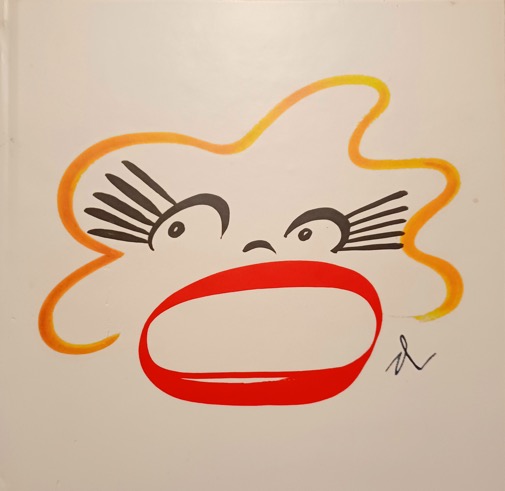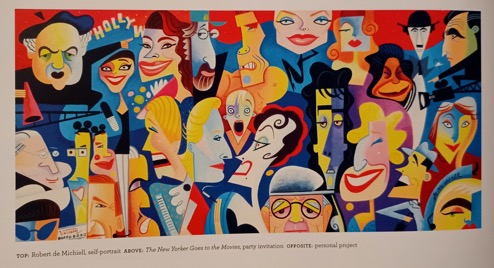
TO OPEN this book is to enter an enchanted land of quirky pop-culture gods and goddesses, soulful songbirds, and Fire Island hunks—all seen through the fantastical lens of an illustrator whose work is sure to make you smile. Johnny Depp, in his Pirates of the Caribbean getup, becomes a cubist cartoon figure, colorful as a baby’s nursery but with a piercingly sexy glance. On a New Yorker cover, a tourist couple stare, aghast, at the Picasso-esque hipsters in a French café. Lena Horne’s intimidating glamour jumps off the page: the outrageously defined cheekbones; the blinding teeth; the intense, popping eyes.
It was in 1980 that Robert de Michiell found paradise in New York City, Horne’s hometown. Before that he had lived in several quieter places: Portland, Maine, where he was born; then Kodiak, Alaska and Waterford, Connecticut, where he grew up. After graduating from the Rhode Island School of Design, Robert moved to Manhattan’s Upper East Side.
Within a few years, his whimsical imagery was in Entertainment Weekly, Time, and the New Yorker; on theater posters; in ads for Absolut Vodka, Disney, VH1, Comedy Central. He entered the class of artists who had inspired him, notably Richard Amsel (known for the art on Bette Midler’s first two albums and on thirteen years of TV Guide covers), Miguel Covarrubias (Vanity Fair’s star caricaturist of the ‘30s), and most of all Al Hirschfeld. Robert became a man-about-town without ever losing his childlike sense of wonder. “I like to approach my art like my life—with a sense of fun and enthusiasm,” he told the Advocate.
Eccentricity excites him. “My favorite celebrity to draw is someone with an extreme personal style. Johnny Depp is always a blast because of his wild costumes and makeup. But ask me to draw Demi Moore and I’m clueless. Too many of today’s stars are unremarkably generic. Personality is always more fun to caricature than beauty.”
In the 1980s he discovered endless pizzazz in Fire Island Pines, from then on his second home. The Pines is identified with snobbery and attitude, but given his knack for bringing out the best in people, it was no surprise when he compared the place to a “very warm hug.” His Pines paintings—most of them done for a popular postcard series—depict the Shangri-La that gay men hope to find there: one of pumped-up beach boys frolicking in the waves and finding love beneath the setting sun.
Robert’s work exudes that warmth. The art reflects the man, and this book is a monument to both.
